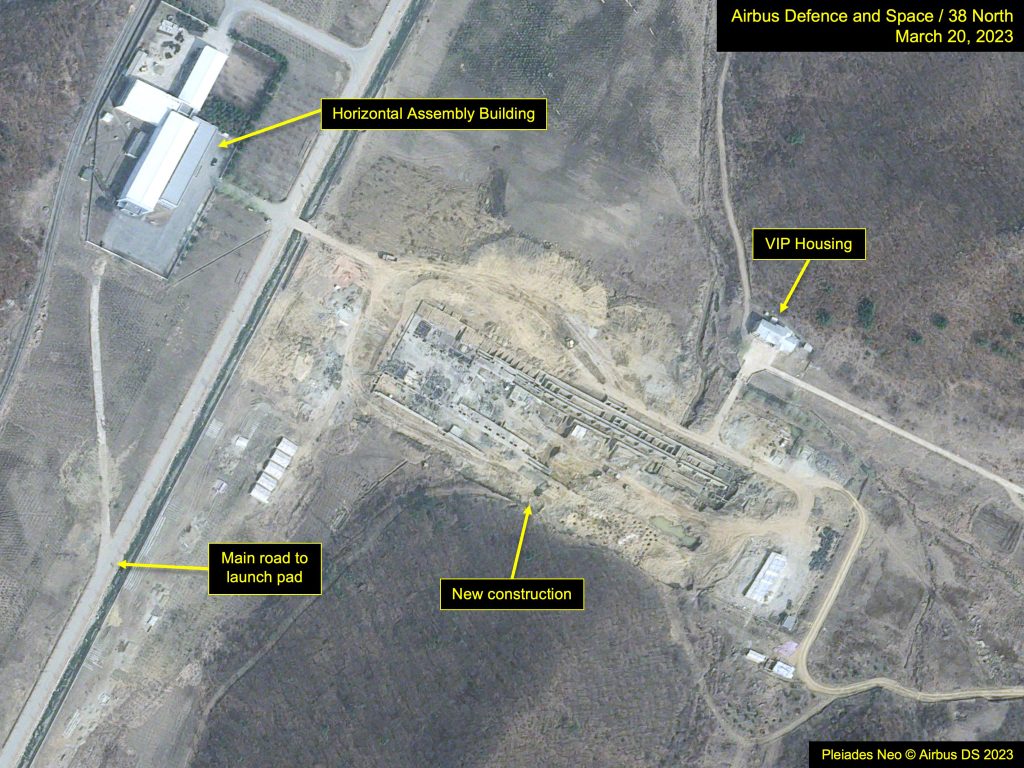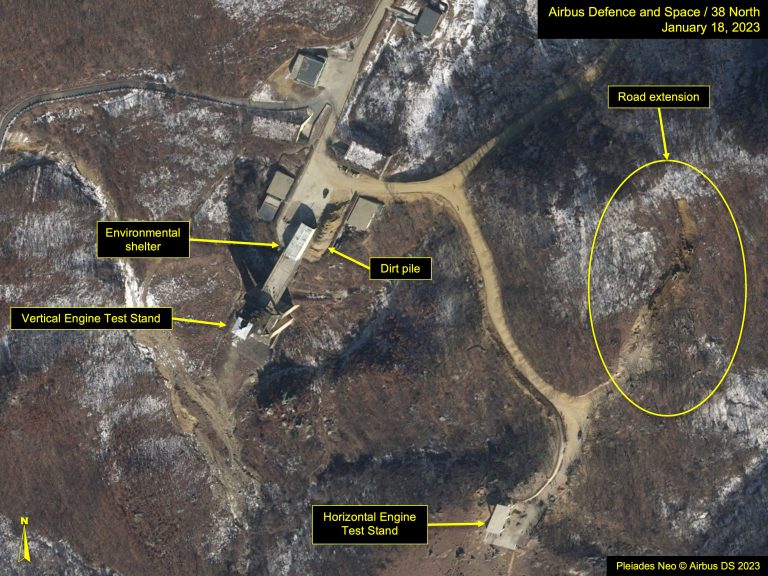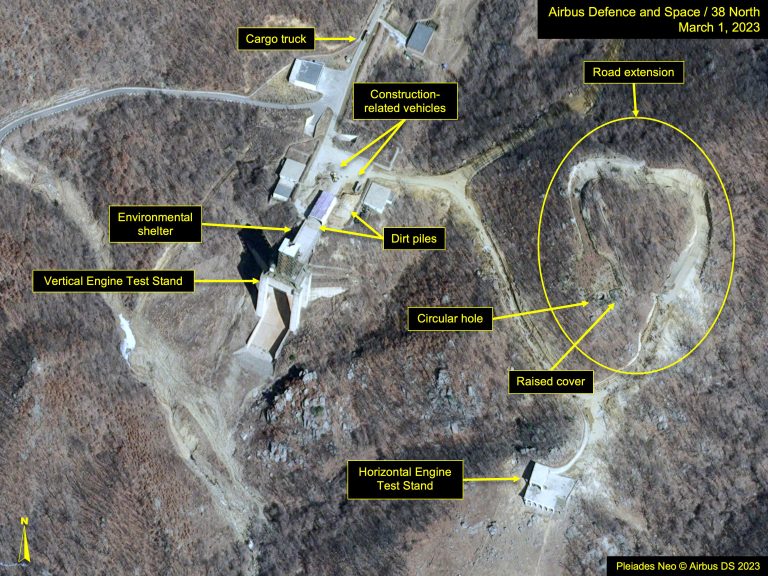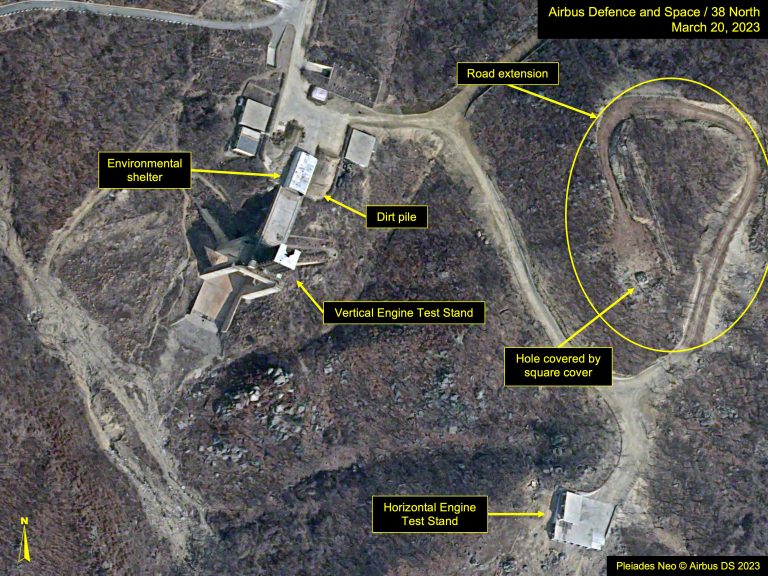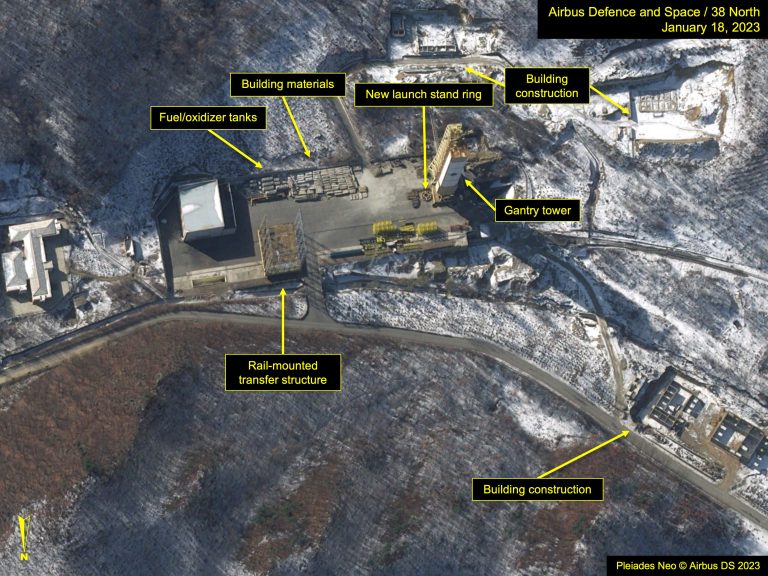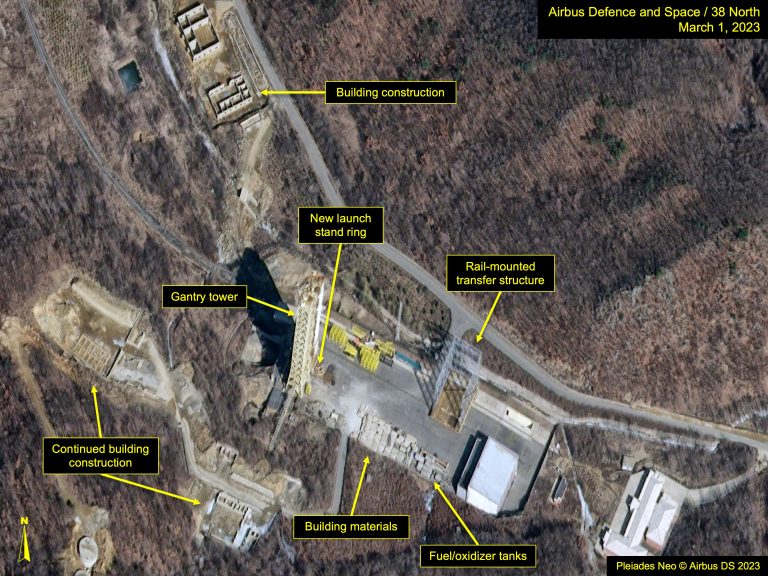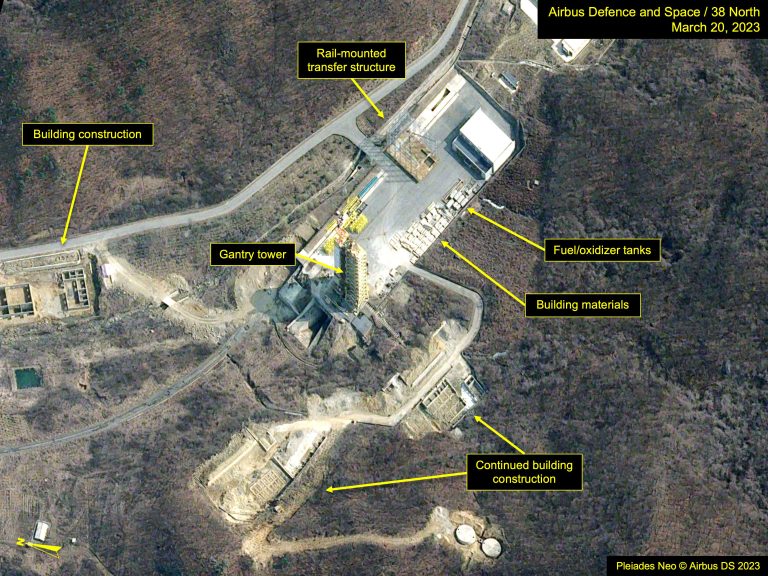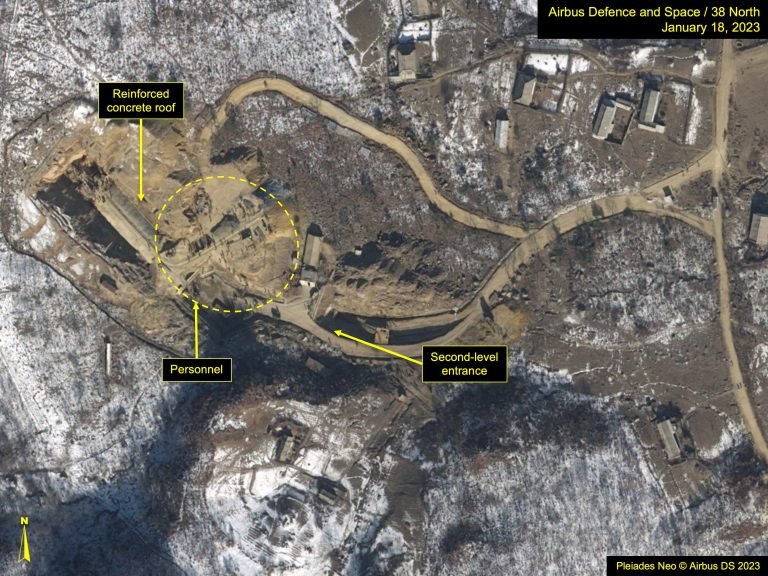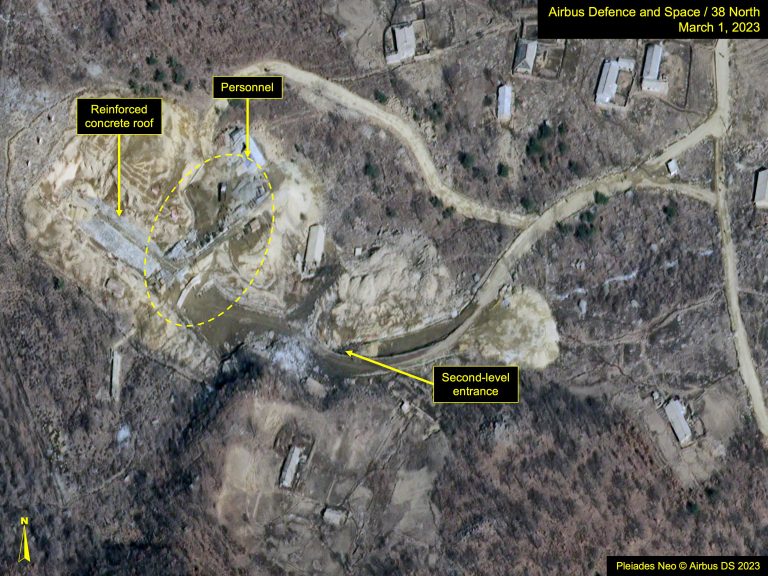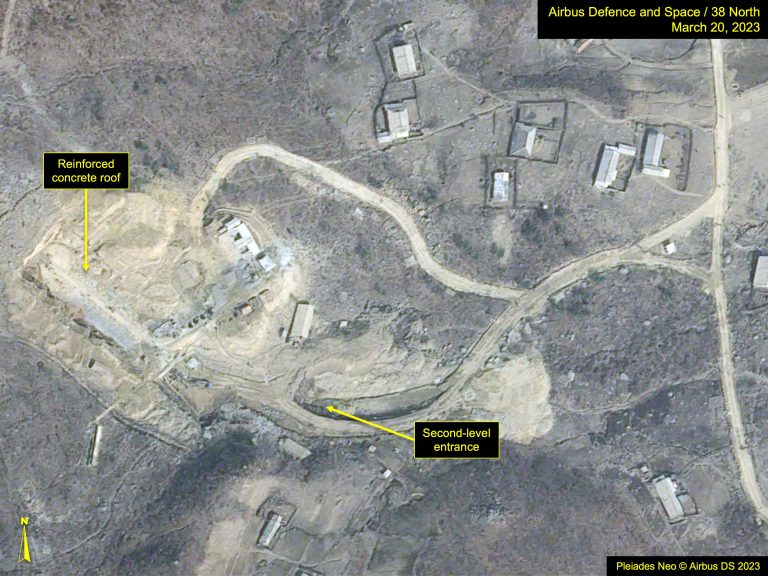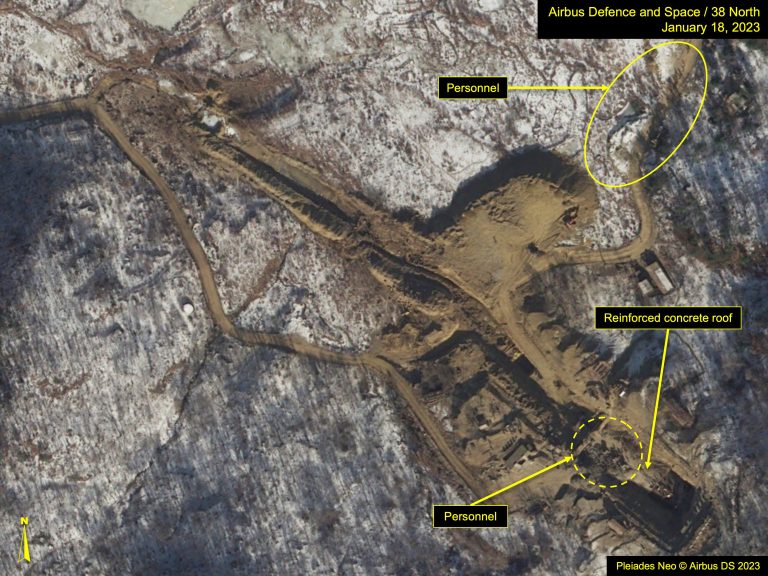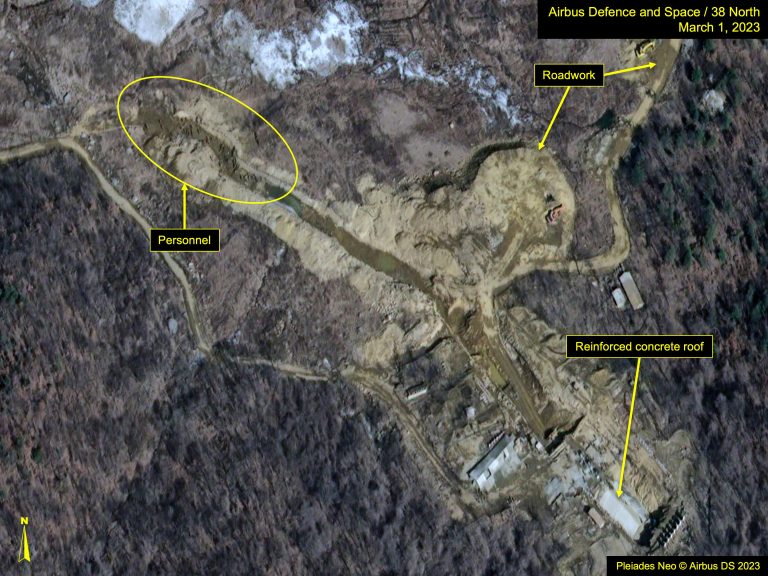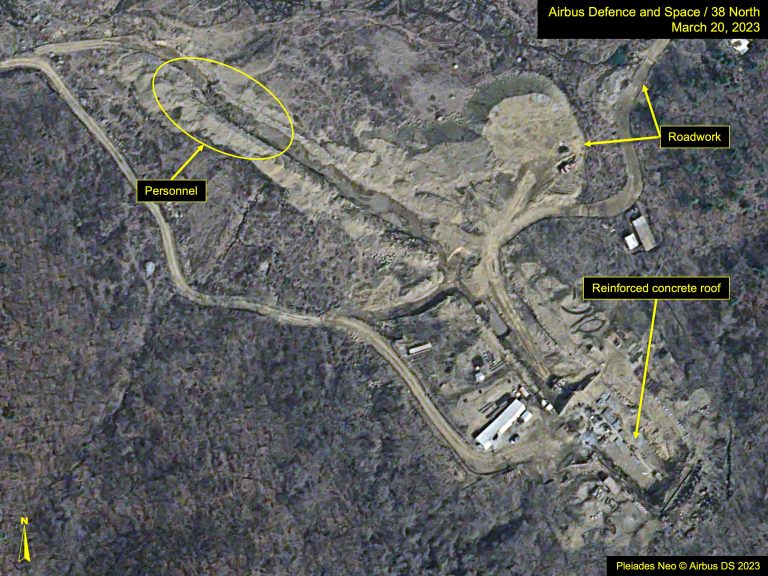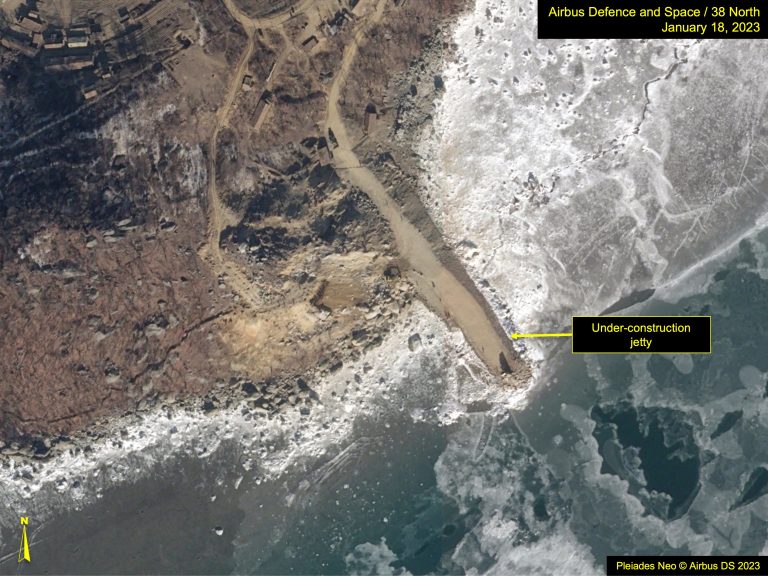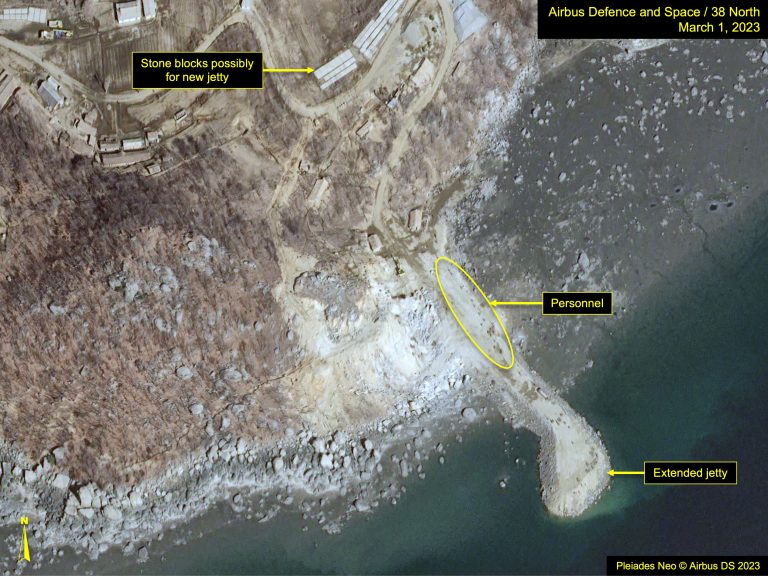Sohae Satellite Launching Station: Enhancement Efforts Continue and Possible Missile Silo
Recent commercial satellite imagery of North Korea’s Sohae Satellite Launching Station indicates that work continues on the main launch pad to accommodate larger satellite launch vehicles. In addition, both the construction and recent test at the new Horizontal Engine Test Stand (HETS) and continued work on other major components of the launch station complex underscore the DPRK’s commitment toward meeting the ambitious goals set by Kim Jong Un a year ago.
Construction in recent months has largely concentrated on building the site’s technical infrastructure, including the addition of a massive roadway tunnel and multi-purpose underground complex, expansion of engine testing capabilities, the creation of a new seaport to service the station and support areas, and the installation of a new road down to the seaport. These efforts, once complete, will prepare the site to accommodate more and larger satellite and missile launches.
In addition to the ongoing construction, North Korean media recently reported a ballistic missile launch took place on March 19 from the Sohae complex. Photos of that launch raised speculation about the possible use of a missile silo. While imagery since early March does show a possible missile silo on the hilltop above the HETS, around the probable location of the missile launch, the speed of the possible silo’s construction and post-launch evidence around the site do not appear consistent with a silo launch.
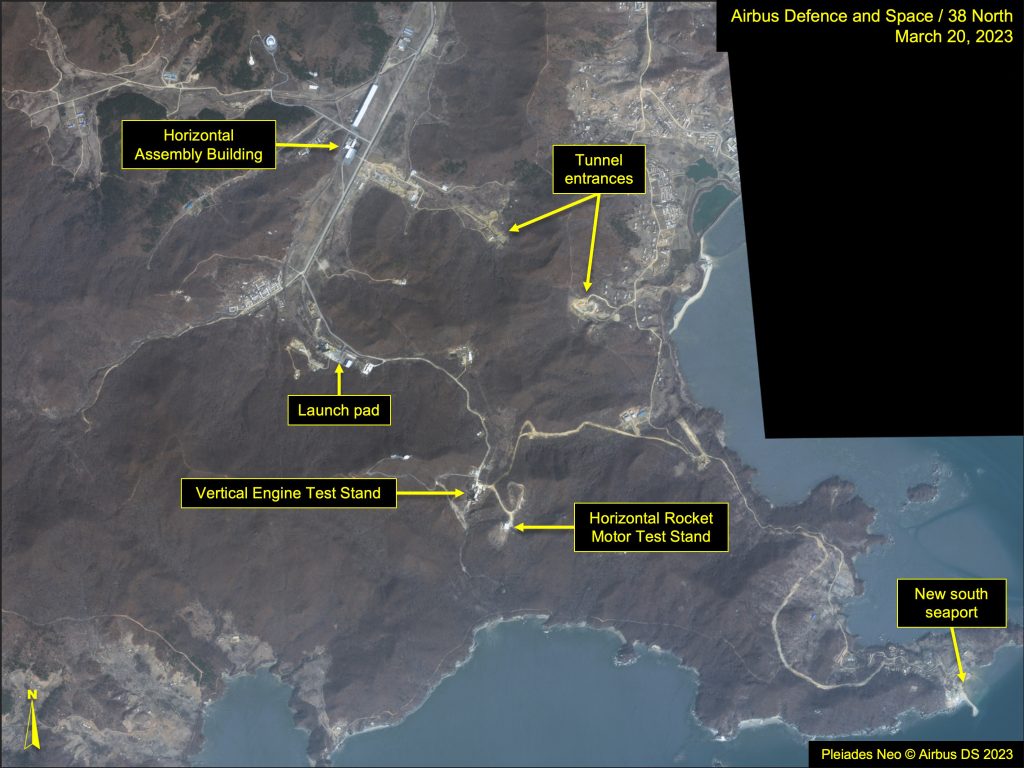
Engine Test Stand Area and Possible Missile Silo
At the Vertical Engine Test Stand (VETS), two construction-related vehicles were visible near the dirt piles on the apron, and one cargo truck was seen leaving the area on March 1. The dirt piles have changed in size since January, and there are also dirt piles visible within the environmental shelter.
On imagery from January 18, what appeared to be a short road spur to support the loading of rocket engines into the HETS, was being extended further up the hill. By March 1, the road had reached the summit of the hilltop overlooking both the VETS and HETS, a rectangular area had been cleared, and beginnings of a circular hole were present.
On March 19, North Korea launched a KN-23 short-range ballistic missile from this area, leading to widespread speculation that it was launched from a silo rather than a mobile launcher.
Ground photos showed a missile launch from a wooded area, with Kim Jong Un, his daughter and several officials observing. The photo angles and smoke from the launch obscured the actual launch site, making it impossible to verify the method of launch.
While a silo launch cannot be ruled out, it seems unlikely. There does appear to be a makeshift missile silo at this location. As noted, a circular hole was first observed on imagery from March 1 that appeared to be about one meter deep, with a square raised cover located next to it. To accommodate the length of a missile or a missile canister, further excavation would have been needed, likely into a rock base, which would have taken some time to complete. Alternatively, since the bottom of the hole appeared smooth and bright, what was visible could have been the top of a missile canister already lowered into the silo.
In imagery from March 23, the hole was covered by the square raised cover. Debris was scattered around the area in a circular pattern, suggesting this was the site of ignition. However, whether it was launched from the “silo” is unclear, as a mobile transporter-erector-launcher (TEL) could have also been positioned near or over the hole, which would have produced the same effects.
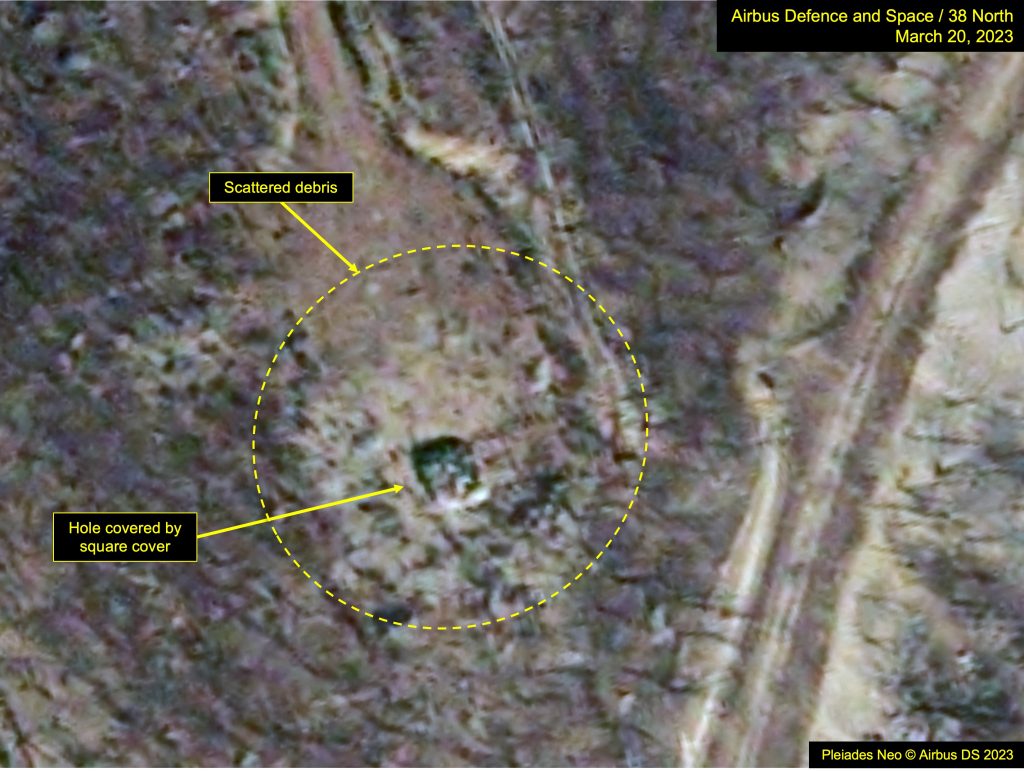
In general, missile silos are used to protect and hide large, long-range missiles, not missiles such as a KN-23 SRBM, which are designed to be highly mobile and elusive.
Launching missiles from TELs at Sohae is not unusual. While there is no known designated area for such launches, the large horizontal assembly building located within the complex can easily accommodate the storage of such TELs.
Launch Pad
Imagery from March shows the framing for the mobile transfer structure has increased in height to accommodate larger launch vehicles. The white transfer structure wall sections remain on the pad surface, waiting to be installed, along with the new launch stand ring for the gantry tower.
Modifications to the fuel and oxidizer bunkers continue, with the walls now visible, but the pace toward their completion has been slow, as is the case with the launch support structures on the launch pad.
Tunnel Area
Construction at the two tunnel entrances continues at a fast pace. The areas around the concrete roofed entrances have been filled in since January, and what appears to be a second tunnel entrance can be seen, likely to the lower level of the tunnel. There are significant numbers of personnel working at the tunnels—at least some are building up the road surface leading to the tunnels with the dirt taken from the tunnels and underground areas.
With the expanse and intricacy of the tunnel construction, it is clear that it will provide more than roadway access through the mountains into the complex. It could be a multi-purpose underground facility to accommodate other functions, such as missile storage and site control functions, albeit those are yet to be determined.
Jetty Construction
Significant additions have been made to the new jetty located at the southeast point of the Sohae Peninsula. Jetty construction from January through early March worked to extend it into the sea beyond a point affected by the daily tides. Imagery from March 20 shows a new phase of construction. Concrete blocks, previously observed along the road accessing this area, are now being placed to build up the coastline, likely for placement of a berthing quay.
It is probable a second jetty may be constructed to the east side of the new quay, which will create a small port. A rectangular area can be seen below the water’s surface nearest the new quay wall, indicating the area will be completely dredged to create a small seaport unaffected by tidal fluctuations. Ultimately, this port will eventually allow for the unimpeded shipping and receiving of heavy materials to the area by sea.
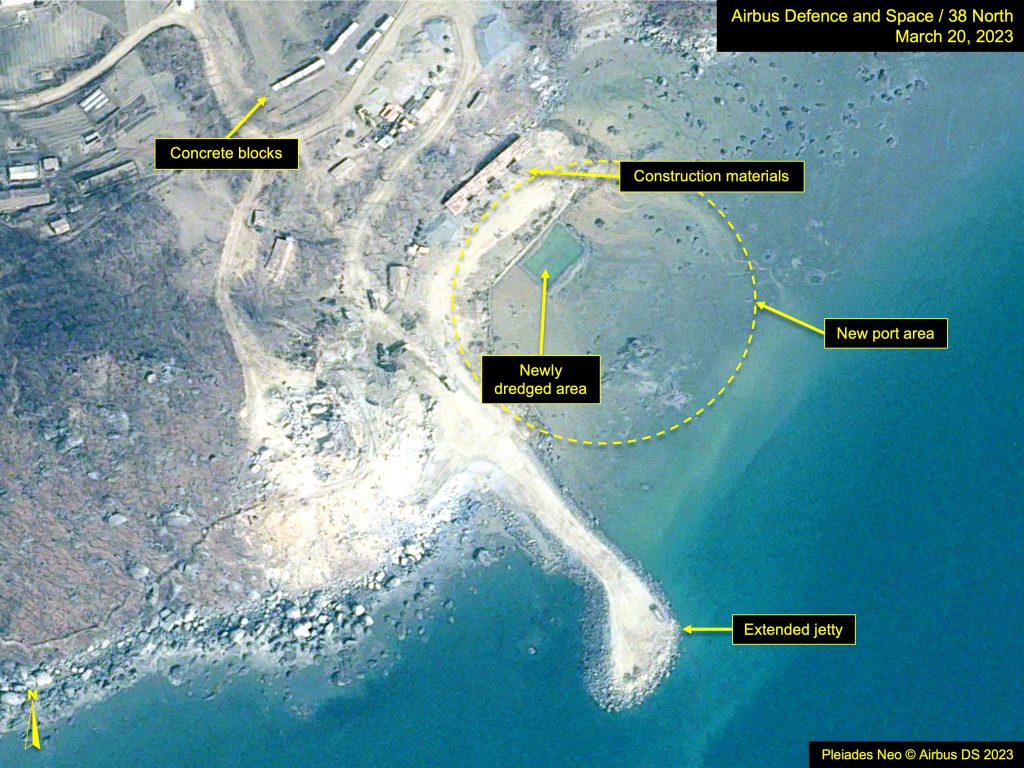
Other Activity
Construction progress on the large building under construction near the VIP housing area continues but at a slow pace, with little change having occurred between March 1 and 20. This is also true for the two smaller buildings being built near the satellite launch pad.
